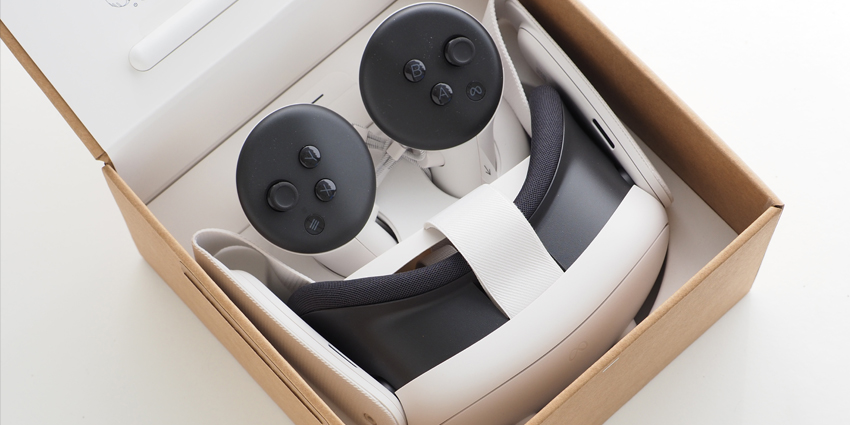The HTC Vive was already one of the more powerful VR headsets on the market when it arrived a couple of years ago, but it also had some serious issues. The Vive was clunky and needed some updates to audio and visual performance before it could become a “mainstream” solution.
With the HTC Vive Pro, HTC hopes to take the immersive experience to the next level, with built-in headphones, dual outwards-facing cameras, a more comfortable design and so much more. Unfortunately, the full kit is quite a bit more expensive than its predecessor.
So, if you have the hardware and cash required for it, is the HTC Vive Pro worth your money? Let’s take a closer look to find out.
HTC Vive Pro Review: The Features
The Vive Pro is the latest and greatest tool from HTC, offering room-scale tracking on a precise scale, incredible colour visuals, high-contrast sounds, and so much more. Features include:
- Hi-res headset
- 3D spatial audio
- Optimised ergonomics
- SteamVR tracking system
- Intel WiGig power
- AMOLED screens at 2880 x 1600
- 37% PPI and 78% Pixel increase
- Active noise cancellation
- Audio pass-through and alert mode
- Adjustable eye comfort
- 24% increase in surface area for reduced stress
- Adjustable head strap
- Sub-millimeter precise tracking
The Vive Pro might look like a spruced-up version of the first Vive, but it’s a lot more than that. This device comes with 3D-tracking stereoscopic vision, like you’d get on a Windows MR headset, and built-in headphones for audio.
The Pro looks and feels reliable, with a great range of adjustment options for ergonomic comfort. There’s a dual 3.5-inch AMOLED display, sporting the same 90Hz refresh rate and 110-degree viewing angle. You also get a high density of 615 pixels per inch.
HTC Vive Pro Review: The Hardware
Beyond the ergonomic headset with AMOLED displays, the Vive Pro comes with a Link box to connect to your computer, which features a micro USB port and mini display port. There’s no HDMI port, which might be problematic for some PCs, as you’ll need a separate adapter.
There’s two base stations and two controllers which are exactly the same as those on the original Vive. Alternatively, you can get a SteamVR tracking bundle. The controls are intuitive, but perhaps not as lightweight and streamlined as alternative VR options.
On the plus side, setting everything up for your Vive Pro experience is pretty straightforward. Once you’ve plugged in the base stations and charged the motion controllers, you’ll be just about ready to go. Pressing the button on your Link Box loads Steam VR, and you should start to see an environment where you can set up your room.
HTC Vive Pro Review: The Experience
Although the Vive Pro is a lot more expensive than the previous Vive, it’s easy to see why. The high-res screens mean that you get a much more immersive virtual experience, and the audio is great too, with noise cancellation to block out your surroundings.
Everything looks beautifully crisp and once you really get into the game or experience, you can even start to forget that you’re wearing a headset at all. Graphics are crisp and clear, and voice comes through the headphones well too for collaboration purposes.
The biggest issue experience-wise for some will be that this is a tethered headset, so you’re not fully free to move around at your own will. From a technical perspective, the Pro is better than the original Vive in virtually every way, but it is going to cost you a lot more.







